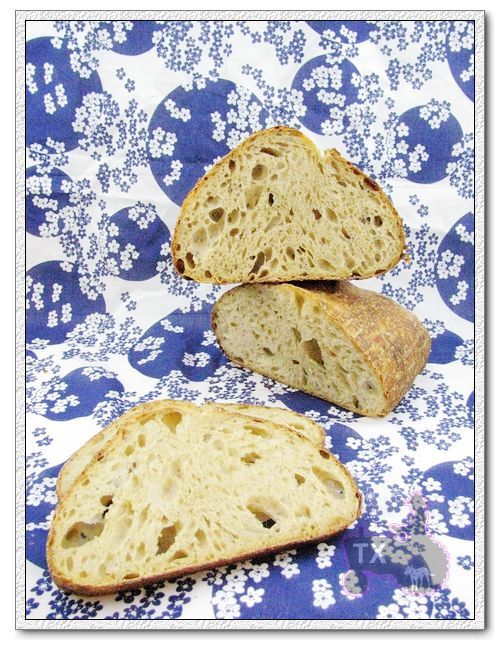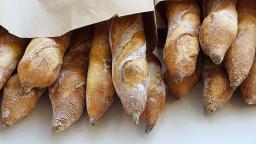
From Maggie Glezer's Artisan Baking, you can find recipe here: http://www.thefreshloaf.com/node/16020/essential039s-columbia
What a great country sourdough, crumb is suprisingly open (only 65% hydration, with some whole grain and wheat germs in), crispy crust and nice chewy texture inside. I am experimenting with firm stater, converted my 100% starter to 60% last week, fed it according to Glezer's instruction in the same book. Even though my wet starter has been performing great, raising beautiful breads, but I want to explore what more flavor a firm starter can bring out, hopefully a bit more sourness.

I am impressed by the firm starter's rising power - 4 to 6 hours of bulk fermentation (I did 5), 3.5 to 4.5 hours of proofing(I retarted the dough after shaping). It rose quite a bit in the fridge, after taking it out, I proofed it for 2 hours, it's longer than any of the doughs I made with my wet starter before, so I got nervous of overproofing, baked the bread even though the dough was still pretty bouncy. Should've listented to the dough, it exploded a bit at the scoring marks, not terrible, but definitely underproofed. Next time I'd do 3 hours after retarding.

The most impressive part is the flavor - definitely a bit more sour than my previous breads made with wet starter, just more noticable, not overpowering at all (we don't like overly sour breads, but do like some subtle sourness to make the flavor of the bread more well rounded). Along with the barley malt syrup, toasted wheat germs, and 4 different kinds of flour, the taste is deliciously complex. I would definitely make it regularly. I might try to make it with my liquid starter (with hydration adjusted) next time just to see how the dough and bread would be different.

Since the flavor and character of a starter takes time to develope, I am going to keep this firm starter for a while, make a few more breads before deciding which one to keep.











